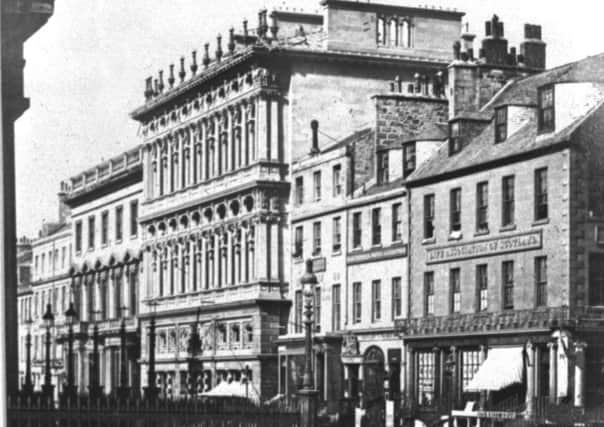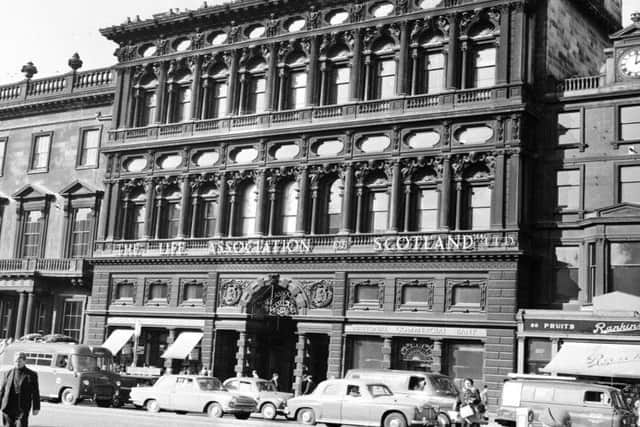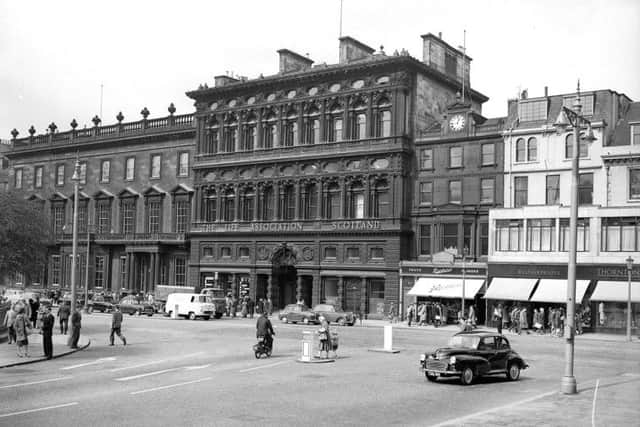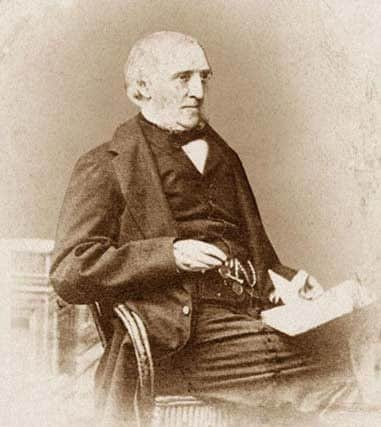Lost Edinburgh: A Princes Street palazzo
This article contains affiliate links. We may earn a small commission on items purchased through this article, but that does not affect our editorial judgement.


The palazzo in question belonged to the Life Association of Scotland insurance company. It was constructed between 1855 and 1858 above and around the foundations of three Georgian townhouses at 81, 82 and 83 Princes Street opposite the west corner of the Mound. An imposing structure, when it opened it was among the tallest buildings on Princes Street, and by far the grandest.
DOWNLOAD THE EDINBURGH EVENING NEWS APP ON ITUNES OR GOOGLE PLAY
Advertisement
Hide AdAdvertisement
Hide AdEsteemed architect David Rhind, born in Edinburgh in 1808, was responsible for its majestic façade, which would serve as the entrance to the new head office for insurers the Life Association of Scotland. Sir Charles Barry, famed for his role in supervising the construction of the Houses of Parliament at Westminster, assisted with the design of the lower floors and mezzanine level to incorporate a hotel and a commercial unit.


Rhind, like his friend Barry, was a disciple of the Italian Renaissance and Classical styles who had won plaudits a decade earlier for designing the spectacular Greco-Roman inspired headquarters for the Commercial Bank of Scotland on George Street (now the Dome).
Banks and insurance firms were transforming Scotland’s cities in the 1840s and ‘50s with a constant influx of ever more ostentatious building designs. The aim was to essentially out-swank your competitors. Rhind and Barry’s 1855 collaboration would not disappoint.
The Life Association building echoed the finest architecture of the Renaissance-era; a true palazzo for Princes Street with its variety of elaborate window bays and cornices, beautifully-fashioned sculptures, and stunning supporting pillars styled in each of the three ancient orders. Aesthetics aside, there were unfortunately some structural issues with many of the internal walls, retained from the pre-existing townhouses, unable to support the extra weight of the new building. Rhind’s reputation did suffer a dent as a result, though the error was soon forgotten about and his career continued to flourish.


Advertisement
Hide AdAdvertisement
Hide AdA cover star for the hugely-popular Illustrated London News in October 1859, the new Life Association premises would go on to be regarded by some as the finest Victorian building ever to grace Princes Street, with distinguished 20th century American architectural historian, Henry Russell Hitchcock, describing it as “the best of all buildings in Britain in the Venetian High Renaissance style”.
A real pity then that there’s nothing of it left.
Demolition


In 1967, despite ardent opposition from a swell of conservation lobbyists and members of the general public, the Life Association building, one of Princes Street’s proudest edifices, was razed to the ground.
Demolition of the Life Association building was reportedly undertaken in the wee hours in an effort to prevent any unwanted interventions.
The Life Association’s immediate neighbour to the west, the original New Club, an elegantly-appointed William Burn creation dating from 1837, had met a similar fate just months earlier (albeit with marginally less public outcry). Out were the grand Victorian insurance offices, hotels, clubs and department stores as Scotland’s capital once again looked to reinvent its main thoroughfare, this time as a thriving, modern shopping precinct tailored explicitly for the 20th century high street consumer.
Advertisement
Hide AdAdvertisement
Hide AdThe concrete-laden replacements for the New Club and Life Association buildings adhered to the infamous Princes Street Panel formula, a series of radical plans conceived years earlier with the aim to purge Edinburgh’s main thoroughfare of all its existing architecture. The Panel recommended a ‘comprehensive redevelopment’ of Princes Street. All new builds would conform to a unified design, restoring the consistency in scale and building materials which had once existed on the street during the Georgian era. A continuous upper level walkway would also run the length of the street, effectively doubling the available retail space. Evidence of the walkway proposal is still visible today.


At least half a dozen of Princes Street’s most celebrated Georgian, Victorian and Edwardian buildings fell between 1965 and 1975 before the tide began to turn and Edinburgh began to re-evaluate the importance of retaining its wider architectural heritage.
The Life Association of Scotland continued in name until 1993 when it was purchased by Britannic Assurance and renamed Alba. Life Association of Scotland policies are now handled by Phoenix Life.